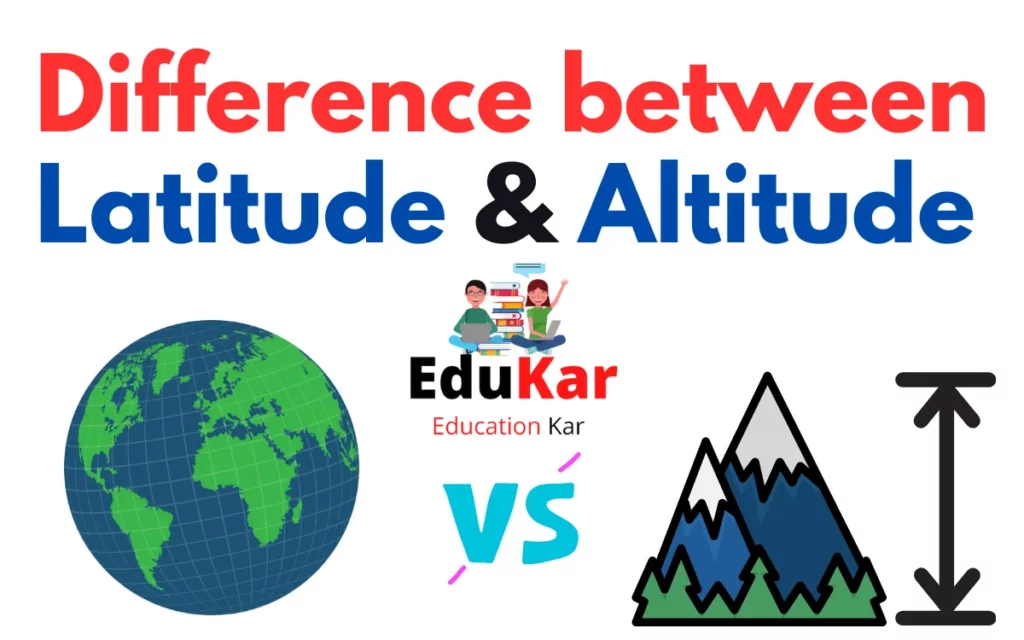Contents
- 1 What are Conventional Sources of Energy?
- 2 What are Non-Conventional Sources of Energy?
- 3 Difference between Conventional and Non-Conventional Source of Energy
- 4 Benifts of Conventional Source of Energy
- 5 What is Conventional Energy sources examples?
- 6 FAQs:
- 6.1 What are conventional sources of energy?
- 6.2 What are non-conventional sources of energy?
- 6.3 What are the benefits of non-conventional sources of energy?
- 6.4 How do conventional and non-conventional sources of energy differ in terms of environmental impact?
- 6.5 How do conventional and non-conventional sources of energy differ in terms of cost?
- 6.6 What role do conventional and non-conventional sources of energy play in the global energy mix?
- 7
Looking to understand the difference between conventional and non-conventional sources of energy? Our comprehensive guide explains the definition, examples, benefits, and drawbacks of both types of energy sources, helping you make informed decisions on the best energy source for your needs. Discover how these energy sources differ in terms of sustainability, cost-effectiveness, energy security, job creation, and environmental impact.

What are Conventional Sources of Energy?
Conventional sources of energy refer to the traditional and widely used sources of energy that have been used for many decades to meet the world’s energy needs. These sources of energy include non-renewable sources such as fossil fuels (coal, oil, and natural gas), nuclear power, and renewable sources such as hydropower, biomass, and geothermal energy. These conventional sources of energy have been widely used for many years, and they continue to be the primary sources of energy for most countries around the world.
What are Non-Conventional Sources of Energy?
Non-conventional sources of energy, also known as renewable energy sources, refer to energy sources that are replenished naturally and are not depleted over time. These sources of energy include solar, wind, geothermal, hydro, biomass, tidal, and wave energy. Unlike conventional sources of energy, these sources are generally considered to be sustainable, as they have a significantly lower environmental impact and can be used repeatedly without depleting natural resources. The use of non-conventional sources of energy is gaining increasing importance as the world seeks to reduce its reliance on conventional sources of energy, which are often associated with negative environmental and health impacts.
Difference between Conventional and Non-Conventional Source of Energy
| Conventional Sources of Energy | Non-Conventional Sources of Energy |
|---|---|
| Fossil fuels, such as coal, oil, and natural gas, are the primary sources of conventional energy. | Renewable sources of energy, such as solar, wind, hydro, geothermal, and biomass, are the primary sources of non-conventional energy. |
| Conventional sources of energy are finite and non-renewable, meaning that they will eventually run out. | Non-conventional sources of energy are infinite and renewable, meaning that they can be replenished naturally over time. |
| Conventional sources of energy are generally cheaper and more readily available than non-conventional sources of energy. | Non-conventional sources of energy are generally more expensive and less readily available than conventional sources of energy, although this is changing as technology improves and economies of scale are achieved. |
| Conventional sources of energy are a major source of greenhouse gas emissions, contributing to climate change and air pollution. | Non-conventional sources of energy are generally considered to be cleaner and more environmentally friendly than conventional sources of energy, although they can also have environmental impacts, such as habitat destruction and land-use change. |
| Conventional sources of energy are often located in specific geographic areas, leading to geopolitical tensions and conflicts over resources. | Non-conventional sources of energy are more widely distributed, reducing the risk of geopolitical tensions and conflicts over resources. |
| Conventional sources of energy require significant investment in infrastructure, such as pipelines and power plants, to transport and distribute energy. | Non-conventional sources of energy often require less infrastructure investment and can be more easily distributed using decentralized systems, such as rooftop solar panels and wind turbines. |
| Conventional sources of energy are often subject to price volatility due to factors such as supply disruptions and geopolitical tensions. | Non-conventional sources of energy are generally less subject to price volatility and can provide more stable prices over the long term. |
| Conventional sources of energy have a high energy density, meaning they can produce a lot of energy in a small amount of space. | Non-conventional sources of energy have a lower energy density, meaning they require more space to produce the same amount of energy as conventional sources. |
| Conventional sources of energy have a long history of use and established industries and supply chains. | Non-conventional sources of energy are relatively new and are still developing their industries and supply chains. |
| Conventional sources of energy have significant geopolitical and economic implications, as many countries rely on fossil fuels for energy security and economic development. | Non-conventional sources of energy have the potential to disrupt traditional energy markets and create new opportunities for economic development and job creation. |
Benifts of Conventional Source of Energy
Conventional sources of energy refer to the traditional or widely used sources of energy, such as fossil fuels (coal, oil, and natural gas) and nuclear power. Here are some of the benefits of conventional sources of energy:
- Reliability: Conventional sources of energy are reliable because they are already established and can generate power consistently. They can be used to provide power on demand and are often used as the primary sources of energy.
- Cost-effectiveness: Conventional sources of energy are generally cost-effective and offer a reliable source of energy at a lower cost. This makes them more accessible to developing countries and other communities with limited resources.
- Accessibility: Conventional sources of energy are available in most parts of the world and can be easily transported to areas that do not have their own sources of energy.
- Efficiency: Conventional sources of energy are often more efficient than renewable energy sources. They can provide power on a large scale and can be used to meet the energy demands of entire cities or countries.
- Job creation: The conventional energy sector creates many jobs, from drilling and mining to transportation and power generation. These jobs provide opportunities for people in many different industries and skill levels.
- Technology: Conventional sources of energy have been widely used for many years, which has led to the development of advanced technologies to extract and transport these resources. This technology has also led to increased efficiency and reduced environmental impacts.
What is Conventional Energy sources examples?
Conventional energy sources refer to the traditional and widely used sources of energy, which have been used for many decades to meet the world’s energy needs. The main examples of conventional energy sources include:
- Fossil Fuels: These are non-renewable sources of energy that come from the remains of dead plants and animals. The main types of fossil fuels include coal, oil, and natural gas, which are used to generate electricity, power transportation, and heating homes and buildings.
- Nuclear Power: Nuclear power uses the energy from the nucleus of an atom to generate electricity. This is done through a process called nuclear fission, where the nucleus of an atom is split into smaller nuclei, releasing a large amount of energy.
- Hydropower: This is a conventional source of energy that uses the power of water to generate electricity. Water is stored in reservoirs and released through turbines to generate electricity.
- Biomass Energy: This refers to energy that is derived from organic matter, such as wood, crop residue, and other plant materials. It is often used for heating and cooking in developing countries, and in some developed countries, it is used to generate electricity.
- Geothermal Energy: This is a form of energy that is derived from the heat of the earth’s interior. It is often used to generate electricity and for heating and cooling buildings.
FAQs:
What are conventional sources of energy?
Conventional sources of energy refer to the use of fossil fuels like coal, oil, and natural gas, which have been used for many years to generate electricity and power vehicles. These sources are considered conventional because they have been used extensively for many years and are well-established in the energy sector.
What are non-conventional sources of energy?
Non-conventional sources of energy are those that are renewable and are not based on fossil fuels. Examples of non-conventional sources include solar, wind, hydro, geothermal, and biomass energy. These sources are considered non-conventional because they are still emerging in the energy sector and are not yet as widely used as fossil fuels.
What are the benefits of non-conventional sources of energy?
Non-conventional sources of energy are renewable, meaning they will not run out, unlike fossil fuels. They are also cleaner and more environmentally friendly, as they produce little to no greenhouse gas emissions. Additionally, non-conventional sources of energy can create new jobs and business opportunities and help promote energy security and independence.
How do conventional and non-conventional sources of energy differ in terms of environmental impact?
Conventional sources of energy are a major source of greenhouse gas emissions, contributing to climate change and air pollution. In contrast, non-conventional sources of energy are generally considered to be cleaner and more environmentally friendly than conventional sources of energy, although they can also have environmental impacts, such as habitat destruction and land-use change.
How do conventional and non-conventional sources of energy differ in terms of cost?
Conventional sources of energy are generally cheaper and more readily available than non-conventional sources of energy. However, the cost of non-conventional sources of energy is declining rapidly as technology improves and economies of scale are achieved. Additionally, non-conventional sources of energy can provide more stable prices over the long term, as they are less subject to price volatility caused by supply disruptions and geopolitical tensions.
What role do conventional and non-conventional sources of energy play in the global energy mix?
Conventional sources of energy still dominate the global energy mix, although the use of non-conventional sources of energy is increasing rapidly. Many countries are now investing in non-conventional sources of energy to reduce their dependence on fossil fuels and promote sustainable development. However, the transition to a more diversified and sustainable energy mix will likely take many years and require significant investment and policy support.
















